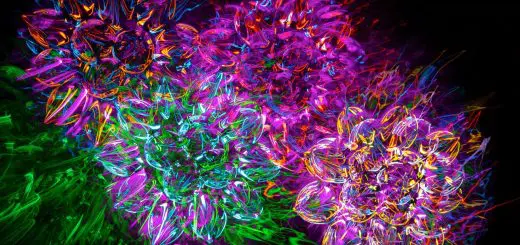Urban Foraging: Finding Edible Plants

Looking for more amazing products? Check out our online store and explore our collection here! Happy shopping!
Before diving in, please note: This post is for informational purposes only. If you’d like to know more about how we approach topics, feel free to check out our friendly Disclaimer Page.
Hey there, amazing readers! 
We’re committed to delivering quality posts, and your support (even just sticking around despite the ads) means everything to us. So, bear with us, and thanks for helping us keep the good vibes rolling. Now, on to the fun stuff!
TRANSLATE BUTTON AT THE END OF THE ARTICLE
Urban Foraging: Finding Edible Plants
Urban foraging, the act of gathering wild edible plants in urban areas, has gained popularity in recent years as people seek to connect with nature and access fresh, free food.
With cities becoming more environmentally conscious and sustainable, urban foraging provides a way to utilize the abundance of plants that grow in urban environments.
While it may seem daunting to navigate the complexities of identifying edible plants in a city setting, with some knowledge and caution, you can safely enjoy the bounty of nature right in your own backyard.
Benefits of Urban Foraging
Urban foraging offers a multitude of benefits, both for individuals and the environment.
Some of the key advantages include:
Access to Fresh, Nutrient-Rich Food: By foraging for edible plants, you can source fresh, organic produce rich in vitamins, minerals, and antioxidants.
Connection to Nature: Foraging allows you to engage with the natural world, fostering a deeper appreciation for the environment and the ecosystems that support us.
Cost-Effective: Foraging is a budget-friendly way to supplement your diet with nutritious foods without spending money at the grocery store.
Reduction of Food Waste: By utilizing wild plants that would otherwise go to waste, foraging helps minimize food waste and promotes sustainability.
Physical Activity: Foraging involves walking, bending, and stretching, providing a low-impact form of exercise that promotes physical well-being.
Safety Tips for Foraging in the City
When it comes to urban foraging, safety is of utmost importance.
Here are some essential tips to ensure a safe foraging experience in the city:
Know What You’re Picking: Always be certain of the plants you are harvesting and avoid anything you are unsure about to prevent accidental ingestion of toxic plants.
Avoid Contaminated Areas: Steer clear of plants growing near roadsides, industrial sites, or areas sprayed with pesticides to avoid exposure to pollutants.
Wash Thoroughly: Before consuming any foraged plants, wash them thoroughly to remove dirt, debris, and any potential contaminants.
Respect Private Property: Obtain permission before foraging on private land to avoid any legal issues or trespassing charges.
Use Proper Tools: Carry a foraging knife, gloves, and a guidebook to help you identify plants accurately and safely.
Common Edible Plants in Urban Areas
In urban environments, you can find a variety of edible plants that are both nutritious and delicious.
Some common edible plants to look out for include:
Dandelion: The entire dandelion plant is edible, from its roots to its flowers, and is rich in vitamins A and C.
Chickweed: This mild-tasting green plant is abundant in urban areas and can be used in salads or cooked dishes.
Plantain: Not to be confused with the fruit, plantain leaves are edible and have medicinal properties.
Purslane: A succulent plant that is high in omega-3 fatty acids and can be used in salads or stir-fries.
Lamb’s Quarters: Also known as wild spinach, lamb’s quarters are a nutritious leafy green that can be cooked like spinach.
Where to Find Edible Plants in Cities
Urban environments offer a surprising array of locations where you can forage for edible plants.
Some common places to search for wild edibles in cities include:
Parks and Green Spaces: City parks often harbor a variety of edible plants, from wild herbs to fruit-bearing trees.
Vacant Lots: Abandoned lots and urban wastelands can be treasure troves of wild edibles, free for the picking.
Community Gardens: Many cities have community gardens where you can find a diverse range of edible plants cultivated by local residents.
Riverbanks and Waterways: Edible plants often grow near rivers and streams, providing a rich source of forageable vegetation.
Sidewalk Cracks: Even in the most urbanized areas, you can find edible plants like purslane and chickweed growing in sidewalk cracks.
Tools for Urban Foraging
Having the right tools can make urban foraging more efficient and enjoyable.
Some essential tools for urban foraging include:
Foraging Knife: A sharp knife is essential for cutting and harvesting wild plants without damaging them.
Gloves: Protect your hands from thorns, prickles, and potential irritants with a sturdy pair of gardening gloves.
Guidebook: Carry a field guide to edible plants in your region to help you identify plant species accurately.
Container: Bring along a basket or bag to collect your foraged plants and prevent them from getting crushed or wilted.
Water Bottle: Staying hydrated is crucial while foraging, so bring a reusable water bottle to quench your thirst along the way.
Sustainable Foraging Practices
To ensure the longevity of wild edible plants and minimize your impact on the environment, follow these sustainable foraging practices:
Practice Leave No Trace: Leave the foraging area as you found it, taking only what you need and avoiding damage to plants or their habitats.
Rotate Harvesting Locations: Avoid overharvesting by rotating your foraging locations and allowing plants to regenerate.
Respect Wildlife: Be mindful of wildlife habitats and avoid disturbing animals or their nesting sites while foraging.
Plant Native Species: Consider planting native edible plants in your own garden to support local ecosystems and ensure a future supply of forageable plants.
Educate Others: Share your knowledge of sustainable foraging practices with friends and family to promote responsible foraging in urban areas.
Urban Foraging Laws and Regulations
Before embarking on an urban foraging adventure, familiarize yourself with local laws and regulations regarding foraging in the city.
Some cities have restrictions on foraging in public parks or protected areas, while others may permit foraging for personal use only.
Always check for any permits or permissions required before harvesting wild edibles in urban spaces to avoid fines or legal repercussions.
How to Identify Edible Plants
Properly identifying edible plants is crucial to avoid poisoning and enjoy a safe foraging experience.
Here are some tips for identifying edible plants in urban areas:
Consult a Field Guide: Use a reliable field guide or foraging app to help you identify edible plants and distinguish them from toxic look-alikes.
Study Plant Characteristics: Pay attention to the shape, color, texture, and scent of plants to aid in their identification.
Start with Easy-to-Identify Plants: Begin by learning a few common edible plants with distinct characteristics before moving on to more challenging species.
Join a Foraging Group: Consider joining a local foraging group or attending a guided foraging walk to learn from experienced foragers and improve your plant identification skills.
Practice Caution: When in doubt, err on the side of caution and avoid consuming any plant unless you are absolutely certain of its identity and edibility.
Urban Foraging Etiquette
To ensure a positive foraging experience for yourself and others, follow these urban foraging etiquette guidelines:
Respect Private Property: Obtain permission before foraging on private land, and always leave gates as you found them.
Harvest Ethically: Only take what you need and avoid overharvesting to ensure the sustainability of wild edible plants.
Leave No Trace: Dispose of any waste responsibly and leave the foraging area cleaner than you found it.
Be Mindful of Others: Forage discreetly in public spaces to avoid drawing undue attention or disturbing other park visitors.
Share Knowledge: If you come across a particularly bountiful foraging spot, consider sharing the location with other responsible foragers to spread the bounty.
Recipes Using Foraged Foods
Once you’ve successfully foraged for edible plants in the city, you can get creative in the kitchen with these recipes using foraged foods:
Dandelion Salad: Toss dandelion greens with a lemon vinaigrette, walnuts, and goat cheese for a refreshing and nutritious salad.
Chickweed Pesto: Replace basil with chickweed in a traditional pesto recipe for a unique and flavorful twist.
Wild Herb Omelette: Sauté lamb’s quarters, plantain leaves, and other wild herbs with eggs for a foraged herb omelette.
Purslane Stir-Fry: Stir-fry purslane with garlic, soy sauce, and ginger for a tasty and healthy side dish.
Fruit foraged in the city: Make jams, preserves, or pies using wild berries or fruit found in urban green spaces for a taste of the wild in your kitchen.
Joining Urban Foraging Groups
For those looking to connect with like-minded foragers and expand their knowledge of wild edibles, joining urban foraging groups can be a rewarding experience.
These groups often organize foraging walks, workshops, and social gatherings where you can learn from experienced foragers, share tips and recipes, and explore new foraging locations in the city.
By joining an urban foraging group, you can immerse yourself in the world of wild edibles, meet fellow foragers, and cultivate a deeper appreciation for the bounty of nature that surrounds us.
Conclusion
Urban foraging offers a unique opportunity to explore the natural abundance of edible plants that thrive in city environments.
By following safety tips, practicing sustainable foraging techniques, and respecting local laws and regulations, you can enjoy the benefits of foraging while minimizing your impact on the environment.
With a bit of knowledge, caution, and the right tools, urban foraging can provide a rewarding and fulfilling experience that connects you with nature, promotes sustainability, and enriches your culinary adventures.
So grab your basket, put on your gloves, and head out into the urban wilderness to discover the delicious and nutritious world of wild edibles waiting to be explored.
Happy foraging!

The Enlightenment Journey is a remarkable collection of writings authored by a distinguished group of experts in the fields of spirituality, new age, and esoteric knowledge.
This anthology features a diverse assembly of well-experienced authors who bring their profound insights and credible perspectives to the forefront.
Each contributor possesses a wealth of knowledge and wisdom, making them authorities in their respective domains.
Together, they offer readers a transformative journey into the realms of spiritual growth, self-discovery, and esoteric enlightenment.
The Enlightenment Journey is a testament to the collective expertise of these luminaries, providing readers with a rich tapestry of ideas and information to illuminate their spiritual path.
Our Diverse Expertise
While our primary focus is on spirituality and esotericism, we are equally passionate about exploring a wide range of other topics and niches 

To ensure we provide the most accurate and valuable insights, we collaborate with trusted experts in their respective domains 
Our blog originally focused on spirituality and metaphysics, but we’ve since expanded to cover a wide range of niches. Don’t worry—we continue to publish a lot of articles on spirituality! Frequently visit our blog to explore our diverse content and stay tuned for more insightful reads.
Hey there, amazing reader! 
Check out our store here and take a peek at some of our featured products below! Thanks for being awesome!










